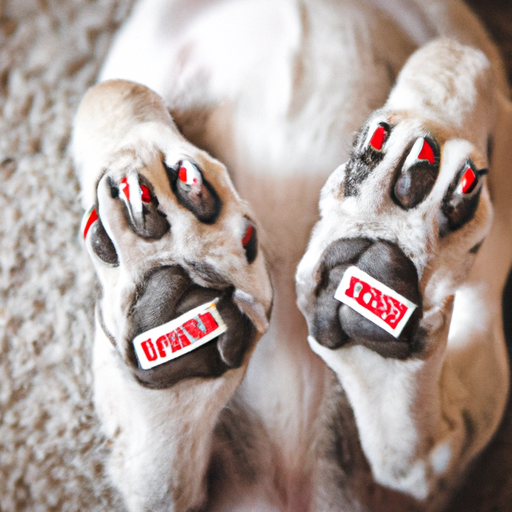When you look down at your dog’s foot, what do you see? Pads, claws, and those strange little extra toes that don’t seem to do much. Dogs’ feet are fascinating structures designed for traction, balance, and shock absorption. One of the most frequently asked questions about dogs is, “What are dogs’ toes called?” This article will dive into this topic, revealing the complexities and wonders of canine anatomy, particularly their toes, and answer this intriguing question.
Table of Contents
- What are Dogs’ Toes Called?
- The Anatomy of a Dog’s Toe
- The Function of Dogs’ Toes
- The Dewclaw: The Mysterious Extra Toe
- Caring for Your Dog’s Toes
- Frequently Asked Questions
Key Takeaways:
- Dogs’ toes are called “digits” or “phalanges.”
- The structure of a dog’s toe is more complex than what meets the eye.
- The extra toe, or dewclaw, serves different functions depending on the breed.
- Regular care and attention to your dog’s toes can prevent health issues.
Now, let’s embark on this fascinating exploration of canine toes.
What are Dogs’ Toes Called?
The toes of a dog are typically called “digits”. Similar to human toes, each digit on a dog’s foot is made up of several small bones known as “phalanges”. The term “phalanges” is derived from the Greek word “phalanx”, which means a line of soldiers. The phalanges in a dog’s toe line up just like soldiers, giving the toe its shape and structure.
In addition to phalanges, there are other parts of a dog’s toe that you may have heard of. These include the claw or nail, the digital pads, and the mysterious extra toe known as the “dewclaw”.
The Anatomy of a Dog’s Toe
The anatomy of a dog’s toe is quite complex. Each digit consists of three phalanges – the proximal (closest to the body), middle, and distal (furthest from the body) phalanges. These are connected by joints and surrounded by connective tissue and muscles.
The top of each digit is protected by a hard, keratinous claw. This claw is similar to our fingernails and grows continuously throughout the dog’s life. Underneath the phalanges are soft, shock-absorbing digital pads. These pads provide traction and cushion the foot against impact.
The Function of Dogs’ Toes
The primary function of a dog’s toes is to provide traction and balance. The flexibility of the digits allows the dog to grip uneven surfaces, dig, and make sharp turns. The claws enhance this function by providing additional grip, especially when running or climbing.
It’s interesting to note that different breeds of dogs have different numbers of toes. Most dogs have four toes on each foot, but some breeds, like the Norwegian Lundehund, have six toes. This extra toe helps them climb steep cliffs.
The Dewclaw: The Mysterious Extra Toe
You might have noticed a small, seemingly useless toe on the inside of your dog’s foot. This is the dewclaw. The dewclaw is considered a vestigial structure, meaning it’s a remnant of an earlier stage in the dog’s evolution. In some breeds, the dewclaw is well-developed and functional, used for gripping objects or for traction when running. In other breeds, it’s little more than a tiny, floppy digit.
Caring for Your Dog’s Toes
Caring for your dog’s toes is an important part of their overall health. Regularly check their feet for any signs of injury or infection. Make sure their claws are kept at a healthy length. Overgrown claws can cause discomfort and even injury.
If you notice anything unusual about your dog’s toes, don’t hesitate to consult your vet. You can find more detailed information on how to care for your dog’s feet here.
Frequently Asked Questions
-
How many toes do dogs have?
Most dogs have 16 toes – four on each foot. Some breeds, like the Norwegian Lundehund, have more. -
Why do some dogs have dewclaws?
Dewclaws are remnants of an earlier stage in a dog’s evolution. In some breeds, they are functional and used for gripping or for traction. -
What should I do if my dog’s toe is injured?
If your dog’s toe is injured, seek veterinary attention immediately.
In conclusion, while seemingly simple, your dog’s toes are complex structures with an important function. Understanding their anatomy and function can help you better care for your furry friend.
For more information on dog anatomy, you can refer to these articles from OneTopDog, Canine Structure 101, and Dog Health Basics.



